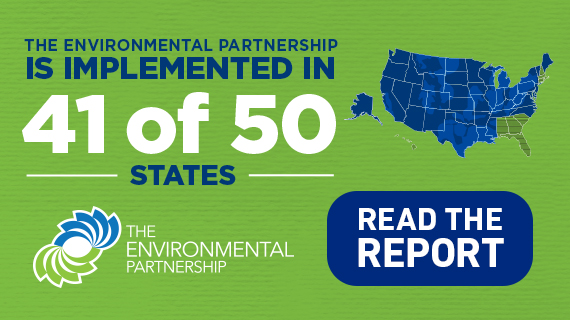Equilibrium/Sustainability — Presented by The American Petroleum Institute — Bezos promises $1 billion for biodiversity

Today is Tuesday. Welcome to Equilibrium, a newsletter that tracks the growing global battle over the future of sustainability. Subscribe here: digital-release.thehill.com/newsletter-signup.
Amazon.com founder Jeff Bezos announced on Monday that he would put $1 billion into conserving critical landscapes in places like the Amazon and the Congo Basin, The New York Times reported.
That money would be paid out of the Bezos Earth Fund, to which he has pledged $10 billion, as The Hill reported. Bezos’s organization has joined the push to protect at least 30 percent of the globe by 2030 — called 30×30 — in order to help lands and seas recover from the onslaught of logging, farming and fishing that has put a million species at risk of extinction.
Today we’re looking at another type of risk: The dangers migrants shoulder when they seek out a more sustainable future for themselves and their families, and how many Haitians have been deported and returned to the very disarray they fled. Then we’ll turn to a United Nations study that calls for sweeping policy changes in global food systems, as well as the empowerment of women.
For Equilibrium, we are Saul Elbein and Sharon Udasin. Please send tips or comments to Saul at selbein@digital-release.thehill.com or Sharon at sudasin@digital-release.thehill.com. Follow us on Twitter: @saul_elbein and @sharonudasin.
Let’s get to it.
Biden boots Haitians

Hundreds of Haitians are being deported back to their unstable homeland every day by the U.S. — and without the chance to apply for asylum — as the Biden administration has moved aggressively to confront a surge of migrants in the small Texas city of Del Rio.
That’s a serious sustainability concern for Haiti’s beleaguered regime and a sign of American policy in the face of rising climate and economic-spurred migration — two reasons why the American response has the U.N. worried.
First steps: “I left Haiti to go find a better future,” a deportee named Stephanie told Reuters.
Stephanie was one of 327 individuals whose journey ended Sunday back in Haiti — the same country they had fled years before and which is reeling in the wake of both a deadly earthquake and the July murder of President Jovenel Moïse.
“If jobs could be created [in Haiti], we would never have exposed ourselves to this misery in other countries,” Stephanie told Reuters.
What are Haitians doing on the U.S. border? A torturous path led up to 14,000 migrants — the majority Haitian — to gather in a sprawling camp beneath the bridge that connects the Mexican city of Ciudad Acuña, Coahuila to the U.S. city of Del Rio, Texas, the L.A. Times reported.
Many Haitians fled the country for Chile after the deadly 2010 earthquake, or in 2016 to take construction jobs building World Cup stadiums in Brazil. Others have moved north as jobs dried up, particularly in the wake of the pandemic, the Houston Chronicle reported.
Migrants moved through Latin America to the U.S. border in a slow journey that has left “Little Haitis” in cities like Tijuana — allowing Haitians to avoid expensive smugglers in favor of “shared experience and information exchanged between the tight-knit community,” The Associated Press reported.
Information — and misinformation: These networks helped families with small children get safely across the dangerous Darien Gap through Panama, as the AP also reported.
For months, such networks also communicated that Del Rio — a Texas city of about 35,000 — was an easier place to cross the border, The Wall Street Journal reported. But they may also have misled migrants into thinking that “policies are going to change or that cities have different enforcement policies,” Edgar Rodriguez, an attorney at a migrant shelter on the Mexican side of the border, told USA Today.
A MESSAGE FROM API
The Environmental Partnership recently released its annual report highlighting its new flare management program that reported a 50 percent reduction in flare volumes from 2019 to 2020. Read more.
LONG ROAD ENDS IN DISAPPOINTMENT
On Monday, Customs and Border Patrol (CBP) agents on horseback were filmed rounding up migrants in ways that Homeland Security Secretary Alejandro Mayorkas said had “horrified him,” according to CNN.
Still, Mayorkas told potential migrants that if they attempted to enter illegally “your journey will not succeed, and you will be endangering your life and your family’s life.”
More than 6,000 Haitians have been arrested by the Border Patrol, according to the AP. Others are staying in the camp or crossing the border to Mexico, where about 19,000 Haitians have applied for asylum this year — three times as many as a typical year, the AP reported. Mexico typically has not deported them.
The U.S. is expelling migrants immediately: The Biden administration has continued to use a Trump-era provision to rapidly expel Haitians — and other migrants — without giving them the opportunity to apply for asylum, the Texas Tribune reported.
That provision was a Centers for Disease Control and Prevention measure called Title 42, which cites “the serious danger of the further introduction of COVID-19 into the United States” as justification to immediately deport migrants, according to the CBP website.
That concerns the U.N.: “We are seriously concerned by the fact that it appears there have not been any individual assessments of the cases … and that therefore maybe some of these people have not received the protection that they needed,” said U.N. human rights spokesperson Marta Hurtado, according to The Hill.
For deportees, a tough road back home: Haitians interviewed by the new media have articulated their fears about the lack of security in the country they were returning to, as well as the money they wasted trying to immigrate to the U.S.
Recent deportee Mondesir Sirilien lamented to Reuters about the $15,000 he had spent in his failed attempt to get to America.
“I could have invested that money here,” he said. “I could have built a great business.”
UN study calls for sweeping policy changes in global food system

The future of the global food system hinges upon the willingness of policymakers to invest in small-scale rural farming systems — and prioritize equitable access to agricultural innovation and local entrepreneurship, according to a new study from the United Nations.
The report, released by the U.N.’s International Fund for Agricultural Development (IFAD) in Rome on Tuesday, emphasized the importance of focusing investments and policy decisions on rural food value chains, to ensure that all individuals have sufficient access to nutritious food and that producers can earn a decent income without harming the environment.
What’s the impact of small-scale agriculture? Around the world, most residents of rural communities make a living by working on small farms. And farms of up to 2 hectares (about 5 acres) generate around 31 percent of the world’s food on less than 11 percent of global farmland, the study said.
The global agriculture, food and beverage industry is worth about $10 trillion — a figure that is only continuing to grow alongside population increase and urbanization, according to the report. Low- and middle-income countries are becoming wealthier and diversifying their economies — making citizens more willing to pay for healthier diets — but the share of farming in these same economies is plummeting, the authors observed.
And while many growers cannot earn a sufficient living from farming alone, they remain responsible for core food supplies in their countries, the report found.
A food “revolution” may be the only solution: “We are living in a world of huge and unfair contradictions,” Jyotsna Puri, associate vice president of IFAD’s strategy and knowledge department, said in a statement. “There are 800 million hungry people and yet high obesity rates. Nutritious diets are expensive, yet many small-scale farmers are poor.”
Puri, whose department oversaw the study, called for “a revolution so dramatic that previous versions of food systems are unrecognizable.”
FOOD SYSTEMS TRANSFORMATION
So what can policymakers do? The report, published in conjunction with this week’s U.N. Food Systems Summit, offers several concrete steps governments can take to help foster a sustainable and equitable transformation of the world’s food system.
And many of these suggestions are linked to the empowerment of women.
“Evidence suggests that there is a positive association between women’s empowerment and child nutritional status, maternal health and child anthropometrics,” Romina Cavatassi, IFAD report technical lead, told Equilibrium in a statement.
The report advises countries that depend on rural agriculture to take these steps:
- Invest in small and medium-sized enterprises (SMEs) that support activities outside the farm gate — like storage, processing, marketing and distribution.
– Encourage local ownership and employment, particularly among women and young people.
– Provide farmers with access to new and diverse markets.
- Prioritize nutrition education — and empower women to make nutrition decisions.
– Grant women better access to digital technologies so they can engage in economic decisions.
– Offer support for childcare, water and healthcare services.
- Make nature-based innovations and low-carbon techniques available to small-scale farmers, to ensure that operations are more climate resilient.
– Reward eco-friendly practices, such as soil maintenance and pest regulation.
- Develop pricing systems that reflect true production cost and provide income support to ensure that healthy food becomes an accessible commodity.
- Reframe regulations and trade agreements to benefit rural people in developing countries.
The report cited a particular project in Bangladesh, which supported micro-entrepreneurs with self-employment opportunities. Through private investments and government subsidies, production of new crops, like mung beans, surged. That enabled some 400 farmers to increase their income by 25 percent.
And although nutrition was not the initial focus, these adjustments did lead to better food safety and nutrition, the authors explained.
In other words: “A better and larger production of diversified and nutritious food together with better income and access to market results in a more diversified diet and food security,” Cavatassi said.
Click here to read the full article.
A MESSAGE FROM API
The Environmental Partnership recently released its annual report highlighting its new flare management program that reported a 50 percent reduction in flare volumes from 2019 to 2020. Read more.
Transport Tuesday

GM to start replacing batteries in recalled Chevy Bolts
- General Motors is planning to begin replacing the faulty battery modules in electric Chevrolet Bolts that had been recalled due to fire risk, The Wall Street Journal reported.
- While GM said it would start shipping new battery cells to dealerships as soon as mid-October, many owners will likely wait months to get the fix, according to the Journal.
- GM had expanded a previous recall on the Chevy Bolt in August to include about 142,000 vehicles produced since the vehicle went on sale in 2016, the Journal reported.
- The company estimates that the recall will cost about $1.8 billion — one of the costliest safety decisions in the automaker’s history, according to the Journal.
China, Japan, South Korea will need $12.4 trillion to achieve net-zero goals
- China, Japan and South Korea will collectively need to spend about $12.4 trillion to reach net-zero carbon emissions in their transport, according to a report from Dutch bank ING found, cited by CNBC.
- Both South Korea and Japan have committed to achieve net-zero carbon emissions — when they are emitting only as much carbon as is being removed from the atmosphere — by 2050, while China has pledged to do so by 2060, according to CNBC.
- In China alone, this transformation could cost $11 trillion, equivalent to “1.8% of GDP per year through to 2060,” CNBC reported, citing the study.
- ING estimated that Japan’s transition would cost $1 trillion, or “about 20 percent of current Japanese GDP,” while the South Korean transition would cost around $400 billion, or about 0.6 percent of today’s GDP per year — when spread over the next three decades, according to CNBC.
First battery-electric locomotive demos in coal’s heartland
- The Pittsburgh-area rail company Wabtec has unveiled the world’s first battery-electric train, which cuts fossil fuel use by 11 percent, The Guardian reported.
- Wabtec’s FLXdrive engine uses the kinetic energy generated from braking to charge the battery, which it hopes will cut 30 percent of fossil fuel consumption in its next model.
- This helps address freight rail, which the International Energy Agency has called an “often neglected” sector in climate terms — capable of providing low-carbon transport if shippers can figure out how to replace diesel with green hydrogen or battery cells.
Please visit The Hill’s sustainability section online for the web version of this newsletter and more stories. We’ll see you on Wednesday.{mosads}
Copyright 2023 Nexstar Media Inc. All rights reserved. This material may not be published, broadcast, rewritten, or redistributed.



